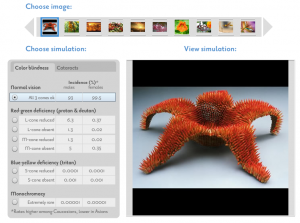There are gender wars, and then there are casualties. It wasn’t until 2011 that the behemoth toymaker LEGO acknowledged girls’ desire to build with bricks, even though the company had long before made a seemingly effortless pivot to co-branding, video games, and major motion pictures. So it’s little wonder that girls face all-too-real obstacles when […]
Read moreSearch Results for:
Work with us
February 2nd, 2011 by IDEA
Join our efforts to enhance scientific, artistic, and cultural literacy through breaking down the barriers between people and computers. We all have a stake in ensuring that technology fulfills its promise, and we welcome your support in identifying, developing, and sharing innovative approaches and technologies that lead to the exchange of meaningful information. There are
Sponsorship
January 31st, 2011 by IDEA
As a nonprofit organization, IDEA relies on generous contributions from individuals, foundations, corporations, and public agencies, all of whom donate money and time to support our theoretical and technological innovations for improving the ways people interact with online information. IDEA is now accepting the sponsorship of this web site, RSS feeds, and some of our
Browse articles
January 31st, 2011 by IDEA
Like museums in the physical world, WebExhibits presents information that is, for the most part, timeless. Yet WebExhibits also demonstrates a radical departure from physical museums, in terms of 24/7 accessibility, adaptation to support multiple learning styles, and cost-effectiveness. As of October 2010, 75% of U.S. households have high-speed Internet access, and virtually all students have Internet access at schools or libraries.
Virtual exhibits are cost effective. It costs only a few pennies to serve a WebExhibits visitor, in contrast with a typical U.S. museum’s cost of $23 per visitor.
If you share our passion for leveraging technology to increase scientific, artistic, and cultural literacy, then get involved! You can nurture bold ideas so that they grow and flourish. (more…)
IDEA presented and demonstrated “Concept Maps for Online Exhibits” at the 2010 Museums and the Web Conference, April 13-17 in Denver. Concept maps are a useful component of online exhibits, as they help meet the needs of multiple learning styles and provide an innovative way to visualize information. SpicyNodes’ radial mapping engine improves upon previous
We’ve just launched a new blog for SpicyNodes, our new concept mapping tool. In that blog, we’ll follow news about the SpicyNodes project development and use, as well as a broader view about concept mapping, mind mapping, and related ways to visualize information.
Not everyone sees the world as you do
You can try the Color Vision tool yourself by selecting an image and choosing a color blindness or cataract simulation. In the process, you can gain an understanding of why it’s important to design web sites that are accessible to people with these vision problems.
Why it matters
Hundreds of millions of people have vision problems. Two primary vision problems are cataracts and color blindness. When a person has a cataract, the lens in his or her eye is no longer entirely transparent. Because aging is the most common risk factor for the condition, increased life expectancy has made cataracts the leading cause of blindness worldwide. (more…)


